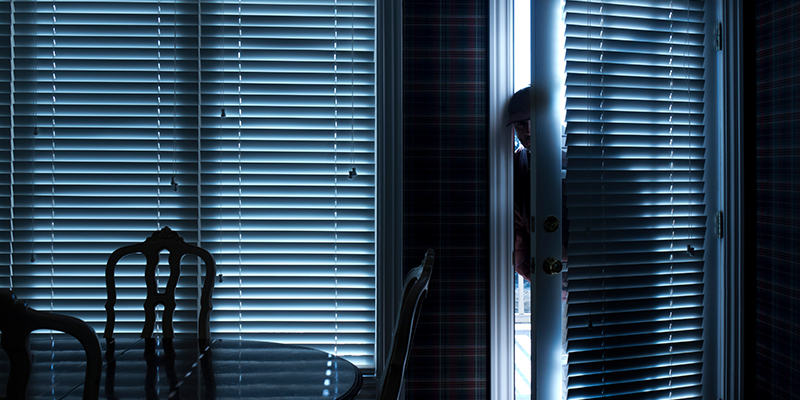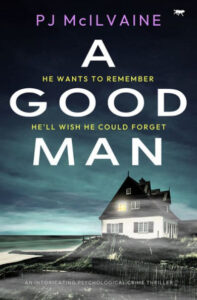In another life, I’m sure I was a political assassin or, at the very least, a cold-hearted femme fatale who was on the right end of a gun or winning cause. How else to explain my long-standing obsession/fascination with mayhem, gore, and murder most foul?
A voracious reader from a tender age, when I wasn’t playing with my Barbie dolls or watching soap operas with my grandmother, I devoured twisty, gritty true crime/bloody fiction/political thriller novels. I cut my teeth on lies, deceit, betrayal, over-the-top drama, wild conspiracy theories, and a host of dysfunctional families. I scared myself so silly that for years I suffered through random episodes of night terrors in which I compulsively peeked under the bed or rummaged through the closet to make sure no monster lurked. My home was supposed to be my sanctuary, my safe haven. Instead, my home felt anything but secure. It was where a great white patiently waited in the shadows to swallow me whole, like poor Quint in Jaws. This was all fertile territory that I’d later mine in A Good Man, my contemporary adult psychological thriller debut partly inspired by my own troubled family.
In my novel, Brooks, a famous and wealthy “bad-boy” author, finally has it all after years of drug addiction and irresponsibility. He’s overcome the demons that have haunted him since the brutal murders of his mother and older brother in 1966 while they were at their family’s summer home in Montauk, a sleepy beachside enclave on the tip of Eastern Long Island. After two horrible marriages, Brooks has found his soul mate in the much younger Cassie. He adores their children even though he doesn’t claim to understand them. Even more improbably, he’s brokered a truce with his father, the irascible Bernard, a powerful statesman in the Henry Kissinger mold. It would seem that Brooks’ life is perfect. Think again. The repercussions of that awful night send Brooks on a downward spiral that ultimately endangers his family, his sanity, his sobriety, and his life.
Bad things can happen anywhere, anytime. But when bad things happen in your own home, it can upend your entire life, much like my poor Brooks. But he’s not the only one afraid of what’s behind the shower curtain.
There are many acclaimed books in the true crime genre, but one of the first to write it as a novelized true crime story—and arguably, the best—is In Cold Blood by literary enfant terrible Truman Capote. The random, brutal murders of four members of the upstanding Clutter family who lived in the small, close-knit farming community of Holcomb, Kansas, had shocked the conscience of the nation. If a family like the Clutters could be murdered in their home, it could happen to anyone. At the time, Capote was living the high life in Manhattan when news of the murders broke. Intrigued, he subsequently decamped to Kansas and as the case unfolded, Capote struck up an unlikely friendship with the accused, and later convicted killers, Perry Smith and Richard Hickock. How had a simple burglary for chump change, a portable radio, and a pair of binoculars by two ex-cons become a grisly quadruple murder scene? It defied reason, but if anyone came close to unraveling the twisted puzzle, it was Capote. The book was a smash and signaled the high point of Capote’s writing career; some critics carped that the book essentially ended it.
Another murderous crime spree that gripped the nation happened in Boston. Between 1962-1964, thirteen women ranging in age from 18-65 were brutally sexually assaulted and killed in their apartments. It took some time for the authorities to realize that a crazed serial killer—dubbed “The Boston Strangler” by the media—was on the loose, a maniac whose unsuspecting victims freely allowed him into their homes. Until the killer was caught, no woman in the greater Boston area was safe. I was a naive, impressionable teen when I grabbed The Boston Strangler by Gerold Frank off the paperback rack in our local stationery store, and it’s fair to say that the book was the catalyst for my life-long OCD.
It was the summer of 1969, and peace, love, and harmony reigned until it didn’t. Senseless murders didn’t happen in Hollywood, and they certainly didn’t happen to a rising star like Sharon Tate, a beautiful, talented actress who was the pregnant wife of celebrated director Roman Polanski. Helter Skelter by Curt Gentry and Vincent Bugliosi told the twisted tale of mastermind Charles Manson and his hippie cult who went on a bloody, brutal, ritualistic rampage over two horrible August nights. Manson encapsulated the seedy underbelly of the 60’s counter-culture, but it was the feral savagery of the murders that was truly shocking.
Home is where a child should feel loved, but Lisbeth Salander, the main character in the gritty The Girl With the Dragon Tattoo, the first book in the Millenium series by the late Swedish author and journalist Stieg Larsson, experienced violence and betrayal from those who should’ve protected her: her mother, her father, and even her own government. Unflinching in her quest for justice and vengeance on her own intractable moral code, Lizabeth is a fictional character of the ages.
In the thriller You Should Have Known (also known as The Undoing/HBO series), author Jean Hanff Korelitz puts a magnifying glass on contemporary Manhattan through the eyes of a successful couples therapist/author married to a pediatric cancer specialist. With the skill of a surgeon’s scalpel, Korelitz carves into this seemingly perfect union of wealth and privilege and dishes up a sociopath on a silver platter in a glossy Architectural Digest feature.
***


















